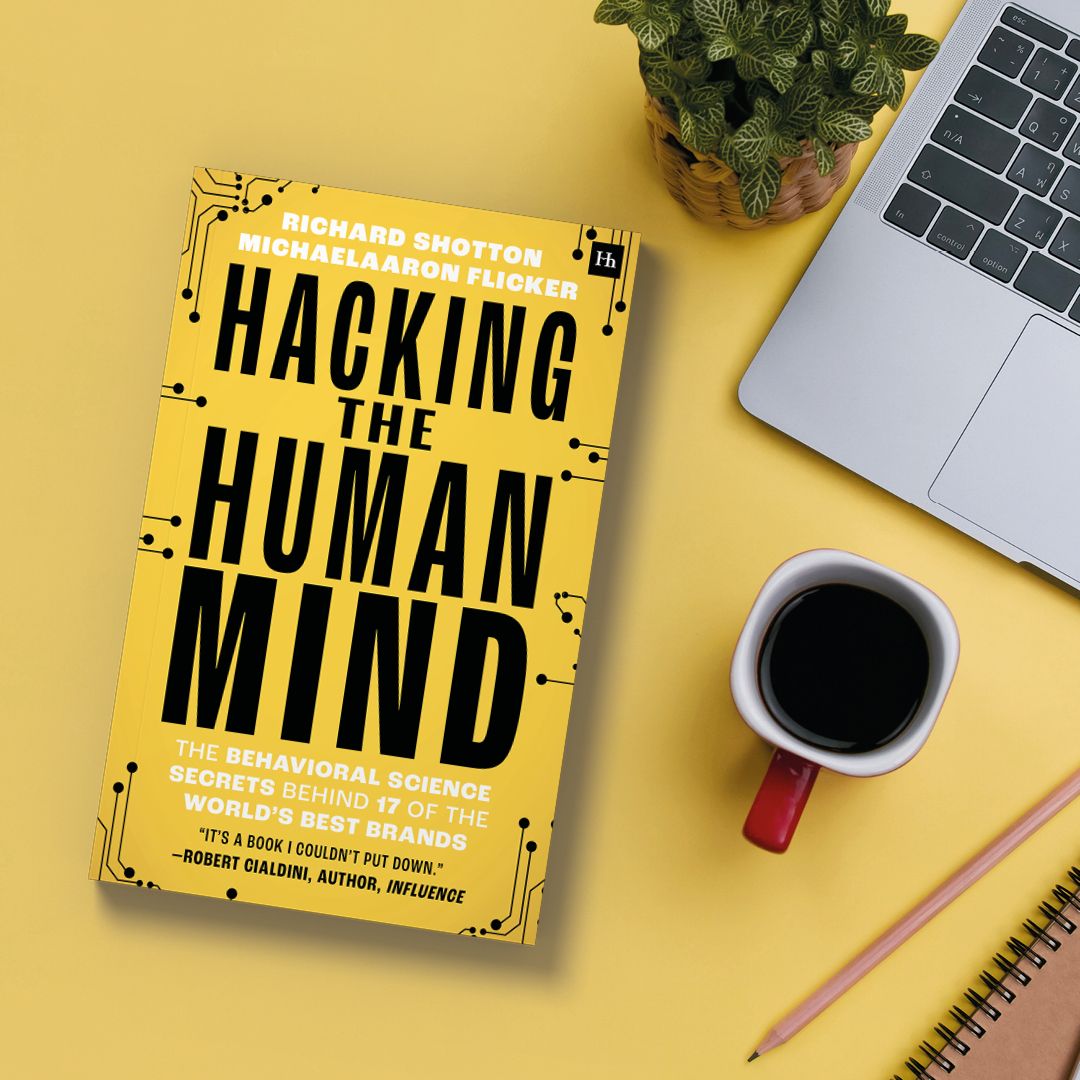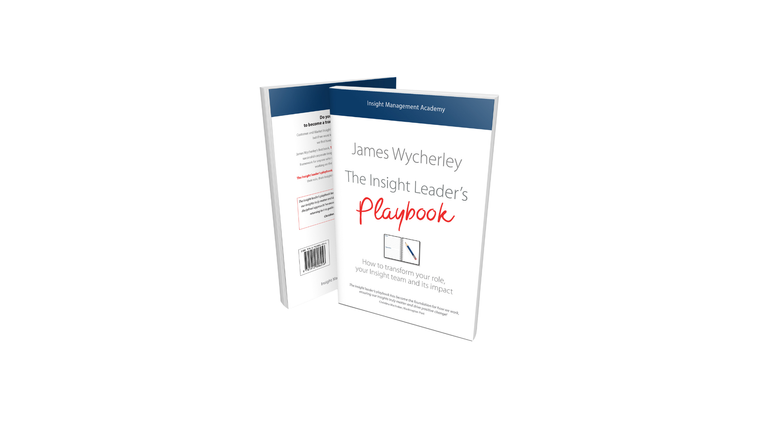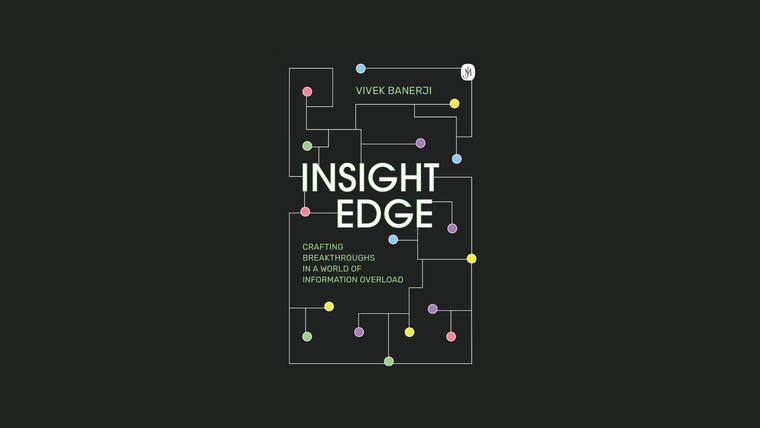Book Review: Hacking the Human Mind – The behavioural science behind 17 of the world's best brands
Hacking the Human Mind is Richard Shotton’s third book. It looks at 17 of the world’s best brands behavioural science secrets.

Hacking the Human Mind is Richard Shotton’s third book. It looks at 17 of the world’s best brands behavioural science secrets.
Each chapter in Richard’s previous books – The Choice Factory and The Illusion of Choice – followed a simple but effective formula. They:
Explained a psychological bias and the academic thinking behind it
Demonstrated the biases’ relevance with supporting academic thinking and more recent experiments and/or case studies
Explained how marketers could apply the bias in their work
In Hacking the Human Mind, Richard – and his co-author Michael Aaron Flicker – apply what they refer to as ‘optimal newness’. They do so by offering readers fresh (vs. Richard’s previous books) ways of understanding behavioural science. But also use some of the familiar principles that have made Richard’s previous books successful.
And it’s through the lenses of ‘the fresh’ and ‘the familiar’ with which we’ll review Hacking the Human Mind.
The Fresh
A new author and a new perspective
The most obvious addition to Hacking the Human Mind is that Richard has a co-author. His co-host of the (excellent) podcast Behavioural Science for Brands, American entrepreneur Michael Aaron Flicker.
Michael Aaron’s contribution to Hacking the Human Mind means that from a writing perspective Richard didn’t succumb to “the curse of knowledge” (see Choice Factory chapter 16 for more!). And from a content perspective it means that via Michael Aaron’s expertise Hacking the Human Mind can pull from relevant research in the US which Richard says is “arguably the heartland for research into behavioural science”.
Flipping the formula
Hacking the Human Mind flips Richard’s previous formula of understanding behavioural science. In each chapter the book discusses a brand’s success. Then behavioural science’s role in this success. Before delving into further evidence & experiments. And finally discussing how to apply the biases the brand has used.
The main reason for this is – fittingly – based on a behavioural science principle. And that’s our preference for concrete ideas over abstract thinking. Richard’s own research shows that people are 10X more likely to remember phrases which they can visualise vs. ones they can’t.
This was supported by Richard’s observations about how people react in behavioural science training. Where, in his words:
You can talk about an experiment, and people nod along vaguely. But when you give them an example, that's when it makes sense which is why this time I led with examples.”
Refreshed research
Hacking the Human Mind contains the results and design details on several recent pieces of research that Richard and others have done. This includes research into humour in advertising, price comparison/relativity and the illusion of effort.
This research is useful as evidence for how different biases work. But also, as a guide for how to run effective behavioural science experiments.
Hello history lessons!
Each chapter begins with a brief introduction to how the brand the chapter focuses on became successful. This is interesting for all those who are interested in marketing history. But there’s also more evidential reasons for this approach.
Richard is a big believer of Bill Bernbach’s quote:
It may be fashionable to talk about the changing man. But as communicators we should be concerned with the unchanging man.”
This means that by referring to how Five Guys used the goal dilution effect in 1986. Or how the ‘Haagen Daz effect’ worked in the 1950’s, we can see that behavioural science’s impact has stood the test of time. Richard’s hope with this is that we avoid:
A year zero narrative where we think that of because of digital, AI and modernity, we think these historic findings are irrelevant”.
The Familiar
An ageless ambition for application
The most important unchanging aspect of Hacking the Human Mind compared to Richard’s previous books is simple. The ambition to ensure that the vast body of evidence about how humans behave doesn’t go to waste. To give marketers what the need to apply behavioural science to their work. To solve the problem that brought Richard and Michael Aaron together:
How to make sure money spent on marketing actually change’s people’s behaviour”.
Friends forever: the OG biases
Some of the biases Hacking the Human Mind discusses will be familiar to people who have read Richard’s previous books. So why include them again you might ask?
Firstly, because Richard & Michael Aaron had to assume that Hacking the Human Mind will be some people’s first behavioural science read. And this means that they’d be remiss to not mention some of the most influential biases like social proof.
But there’s also a benefit in revisiting these biases for those readers who are familiar with behavioural science. And that’s because there are new experiments to support their power. New use cases from newly famous brands like Liquid Death and Klarna. These add further proof that behavioural science can influence behaviour across categories and brands, regardless of their maturity.
Eternally effortless to read
Reading about ‘science’ and ‘experiments’ may sound a daunting task to the time-poor masses working in marketing.
But fear not. Like Richard’s previous books, and very much applying the behavioural science principle of removing friction, Hacking the Human Mind is an easy read.
Short chapters. No need to read chapters sequentially. End-of-chapter summaries. All of which make the book easy to read. But more importantly, easy to refer back to and learn how to apply different behavioural science principles to whatever marketing challenge you face at that time.
In need of more (social) proof?
Robert Cialdini quotes Hacking the Human Mind as being a book “he couldn’t put down”. And that’s all the (social) proof you should need to get this book (which you can do so here) that delivers behavioural science insight use cases in an ‘optimally new’ way.
Jack Miles
Editor in Chief at Research WorldJack specialises in quantitative research for international clients across an array of sectors. These studies have led him to work with brands such as Jaguar, Navistar and Volvo. His main research interests are brand research and consumer trends, with a focus on quantitative methods and the use of statistics to derive solid strategic planning for clients.
He has a particular focus on developing creative ad-hoc quantitative methods that use a range of data sources. He can also be found writing papers for a range of well-known publications such as Admap, Huffington Post and Research World.
Outside the office, Jack can be found training in martial arts, in which he holds a 3rd degree black belt in Taekwon-do, and partaking in various endurance sports.


